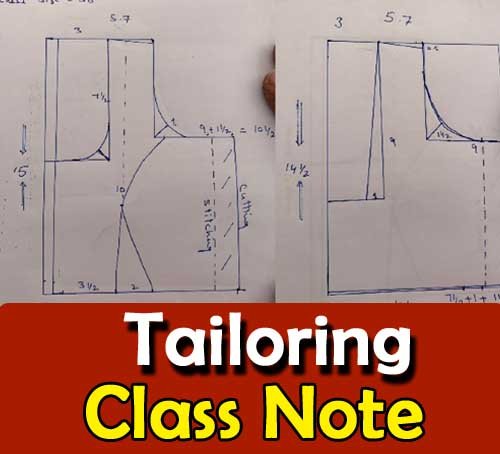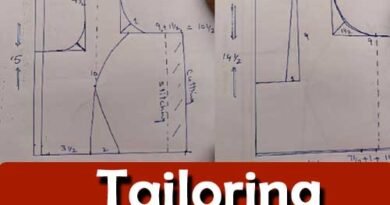Stitching Button and Button Holes
Buttons: The various types of buttons available in the market differ in that they have different number of holes-2 or 4. The method for xing them remains the same. The spot where the button needs to be fixed is determined and then the needle is taken out first from one and then the other to properly fix the button. There should be a little looseness in the stitch so that the button can be easily passed through the button hole.
Button hole
Of utmost importance in the tailoring trade, as it is used on almost all types of garments – ladies, men’s and children. There is a need to keep an opening somewhere on the garment for ease of wearing and taking off Most of such openings are closed with the help of buttonhole stitches. The button hole is always made on the top portion. The buttonhole stitch is used to finish the button hole. It is made on two or more layers of cloth. The button hole has a slight curve on one side known as the fan and an edge on the other known as the bar.
Method: First choose the distance between each button hole Then keeping the diameter of the button in mind, use the tip of a scissor to cut holes in the cloth. To ensure that no, loose strands come out finish the edge with a temporary stitch. Always cut the button hole in the direction of the grain line Then using a single thread finish the edge with a buttonhole stitch keeping a little extra tension on the ‘fan’ side to make a kind of chain stitch is then pressed down once the buttonhole is finished
Hook and eye
An opening can be closed with other methods apart from a button and buttonhole. One of these is the hook and eye. There are hooks of different sizes available to suit different purposes and garments like trousers or blouses. The hook is usually fixed half a point behind the edge of the belt. This is fixed using the buttonhole stitch. It is fixed from two edges below and one point above like a bow. The simple hooks are best used with an eye made from thread by hand, using a button hole stitch. The big hooks used for trousers usually come with a ready made eye of metal which is also affixed using a buttonhole stitch.
Press buttons: These are metal buttons with one part having a tole and the other a nail to fit into the hole. The nail part is always put on the top and the one with the depression on the bottom. This also affixed using the button hole stitch.
Industry Visit
The purpose of visiting a tailor shop/boutique is to get hands on knowledge about various processes involved in the work of a tailor During the visit you have to interact with Tailors and owner of the shop to understand how work is done in a tailor shop/boutique Make sure that you keep a notebook handy and note down any important points that come up during your interaction at the tailor shop/boutique. When you go to an tailor shop/boutique you should.
.Recognize the different parts of a trouser.
. Analyze how an Tailor makes and attaches the pocket bag, fly, zip back rise and front and back pieces to trouser.
.Also observe how he makes and attaches the belt loop, bottom hemming and button and button holes to a trouser.
.Recognize the different parts of a shirt.
. Analyze how an Tailor makes and attaches the left and right hand side placket pocket yoke, placket to sleeve,
sleeve, side seam, collar and neckband, cuff and bottom hemming etc.
.Also observe how he makes button holes and attaches the buttons to shirt.
.Similarly observe other stitching operations like button hole making and attaching in different garment such as saree blouse, kurta etc.
.Ask questions to Tailors/shop owners if you have any query.


